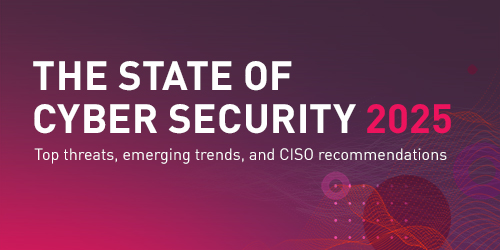How Does SSE Work?
SSE works to protect data, detect threats, and control environment access. It integrates with existing security and cloud services, using cloud-native technologies to offer real-time visibility and control over user activities and data flows.
- Data Protection: SSE employs advanced security mechanisms like encryption, data loss prevention (DLP), and secure access controls to safeguard sensitive information both in transit and at rest.
- Threat Detection: SSE enables rapid response to incidents through use of real-time threat detection, powered by machine learning and artificial intelligence (AI), to identify anomalies and potential threats.
- Access Control: SSE enforces granular access controls based on user identity, device posture, and contextual factors, using a zero trust approach to minimize the attack surface.
The cloud-native technologies that SSE uses allow for scalability, provide consistent protection across various environments, and offer the flexibility to adapt.
Why Is Security Service Edge (SSE) Important?
As employees and data are increasingly located outside the office, SSE helps consolidate and streamline security functions into a single, globally-available cloud-based solution. Some of the major security challenges that SSE addresses include:
- Dissolving Perimeters: Historically, security models were perimeter-focused. These models were based on the assumption that corporate resources were deployed in the corporate datacenter and that securing the connection between the corporate network and the public Internet secured the enterprise. As the traditional perimeter dissolves with the adoption of cloud infrastructure, SaaS, remote work, mobile devices, and the Internet of Things (IoT), traditional centralized security models no longer work. SSE enables companies to deploy security closer to where the user and data is located, with inspection engines delivered from a global network of cloud points of presence (PoPs).
- Security Complexity: As IT infrastructures grow more complex and companies face an evolving threat landscape, many organizations have deployed an array of standalone security solutions to address various threats. As a result, security architectures are hard to monitor and manage, making it easier for cyberattacks to slip through the cracks. SSE consolidates security functionality into a single, integrated solution managed with unified policies, where data is decrypted, inspected and decrypted in a single cloud-delivered security stack, reducing the need for a complex array of standalone security tools.
- Network Performance: Attempting to secure distributed infrastructure with perimeter-based solutions results in inefficient network routing, latency and a poor user experience, where all traffic is backhauled to a central physical location for the purpose of security inspection by an enterprise security stack. SSE eliminates the need for these inefficient routes by deploying security near the users and resources that need it, allowing traffic to be more efficiently routed to its destination.
- Operational Efficiency: Security Service Edge consolidates security functionality into a single, integrated, and cloud-based solution. This makes it easier for security teams to deploy, configure, monitor, and manage security solutions, improving efficiency and reducing operational overhead. Day-to-day operations such as creating backups and ensuring high availability and redundancy are offloaded to a cloud security vendor.
What Are The Main Components Of Security Service Edge?
Security Service Edge is designed to converge network security into a single, cloud-based solution. The primary components of SSE include:
- Zero-Trust Network Access (ZTNA): ZTNA provides a superior alternative to virtual private networks (VPNs) for secure remote access to corporate resources. ZTNA enables organizations to implement granular, in-app zero trust security for remote access to corporate applications residing on on-premises or in the cloud (e.g. internal web apps, wikis, databases, remote desktops and servers, SSH terminals and cloud production environments).
- Secure Web Gateway (SWG): SWGs are designed to protect employees from internet and web-based threats, including phishing sites, malware and ransomware infection points and command and control (C2) bot clients. An SWG monitors and filters web traffic to enforce corporate security policies, block access to known-bad sites, and block malicious files from reaching the user’s system. Key capabilities of an SWG are access control, data protection and threat prevention.
- Firewall as a Service (FWaaS): A firewall is the cornerstone of a corporate network security policy, enabling an organization to restrict network access and block malicious files from entering the network. FWaaS offerings provide firewall functionality under a service-based model, offering greater flexibility and scalability than appliance-based solutions. In the context of SSE, FWaaS refers to securing branch offices, data centers and remote sites using cloud-based network security. FWaaS integrates with SD-WAN solutions to enforce consistent security across numerous sites and branch offices in an automated fashion.
- Cloud Access Security Broker (CASB): As companies become more dependent on a range of Software as a Service (SaaS) applications, they need solutions that enforce corporate security policies and access controls across cloud services. CASB solutions help manage access and protect data accessed in SaaS applications, with capabilities that include authentication, single sign-on, authorization, encryption, monitoring and threat prevention, among others.
- Identity and Access Management (IAM): IAM governs user identities and access to resources, enabling organizations to manage user identities, enforce authentication protocols, and implement role-based access controls.
- Data Loss Prevention: DLP mechanisms protect sensitive information from unauthorized access and exfiltration, monitoring data in motion, at rest, and in use, and applying policies to prevent data leaks.
SSE vs. SASE: What’s The Difference?
While both SSE and SASE aim to secure cloud environments and remote workforces, they serve distinct purposes.
SSE
SSE primarily focuses on delivering essential security services, such as:
- Data protection
- Threat detection
- Access control
SSE does not address networking aspects. It prioritizes security-first strategies, making it well-suited for organizations handling sensitive data or that otherwise require advanced data protection and threat detection capabilities, facilitating regulatory compliance.
SASE
SASE combines the security services from SSE with:
- Wide-area networking (WAN) capabilities
- Zero Trust Network Access (ZTNA) principles
This provides a comprehensive solution for secure access to applications and data. SASE offers similar capabilities, it is ideally suited for organizations with a distributed workforce accessing cloud applications.
It optimizes both security and network performance, ensuring seamless connectivity and protection.
Which One to Choose?
SSE focuses on security services, while SASE integrates security and networking. Each framework caters to different organizational needs and use cases:
- Security Service Edge: Ideal for organizations seeking to secure access to cloud resources and SaaS applications, and to implement a zero-trust approach for cloud-based assets.
- Secure Access Service Edge: Intended for organizations that require secure access to both cloud resources and on-premises networks. SASE is optimized for network performance, such as low-latency connectivity for real-time applications.
Benefits of Security Service Edge
Implementing Security Service Edge (SSE) offers advantages that enhance an organization’s security posture while addressing the challenges of cloud environments.
- Enhanced Visibility: SSE provides improved visibility into user activities and data flows across cloud environments, enabling organizations to identify potential security risks and enforce security policies.
- Improved Threat Detection: SSE solutions leverage real-time analytics and machine learning algorithms to enhance threat detection capabilities, allowing security teams to rapidly respond to threats and mitigate risks before they escalate.
- Cost-Effectiveness and Scalability: SSE solutions are often more cost-effective than traditional security measures, reducing costs. They also offer scalability, allowing organizations to easily accommodate increased user loads and changing security requirements without extensive infrastructure changes.
The enhanced visibility, control, threat detection capabilities, and scalability of SSE make it an attractive option for organizations seeking to strengthen their security.
SSE and Cyber Threats
SSE provides a framework for combating evolving cyber threats, particularly effective in mitigating threats, such as:
It implements strict access controls and data protection measures, and employs advanced threat detection mechanisms to identify and block malicious links and attachments.
Machine Learning and AI
Machine learning and AI are central to enhancing threat intelligence within SSE.
These technologies enable SSE solutions to analyze vast amounts of data in real-time, identifying patterns and anomalies that may indicate potential threats. This approach allows for faster threat detection and response.
Continuous Monitoring & Adaptive Security
SSE incorporates continuous monitoring and adaptive security measures. This enables organizations to maintain real-time visibility into their security posture, quickly identify and respond to potential threats, and adjust their security policies and controls based on the ever-changing threat environment.
These capabilities position SSE as a critical component in the ongoing fight against evolving cyber threats.
3 Best Practices
Implementing Security Service Edge effectively requires adherence to best practices that enhance security and ensure the solution aligns with organizational goals.
- Zero Trust Architecture: Adopting a zero trust architecture is fundamental to the success of SSE. This approach requires continuous authentication and authorization for every access request, ensuring that users have the minimum necessary permissions to perform their tasks.
- Regular Security Assessments: Conduct regular security assessments to evaluate the effectiveness of the SSE implementation and identify vulnerabilities. Regular updates to SSE configurations are essential to adapt to evolving threats and changing business needs.
- User Education Programs: Implement comprehensive user education and awareness programs to inform employees about security best practices and the importance of adhering to security policies. Regular training sessions and updates can help reinforce these concepts and keep security top of mind for all employees.
Effective adoption of these best practices enables organizations to significantly bolster their security posture, ultimately ensuring that the implementation is highly effective at mitigating risks.
SSE Deployment With Harmony SASE
Security Service Edge is a cloud-delivered framework that enhances cybersecurity by providing essential security services like:
- Data protection
- Threat detection
- Access control
It helps organizations secure their users, applications, and data, especially in cloud-centric environments and for remote workforces.
Check Point Harmony SASE is a cybersecurity solution that supports the SSE strategy by providing secure access to cloud resources, and granular access controls tailored to SSE policies. Harmony SASE offers increased visibility and control over cloud activity with its ThreatCloud AI, ensuring effective threat prevention.
Learn how Harmony SASE empowers organizations to seamlessly connect users to on-premises and cloud resources while safeguarding against threats. Schedule a free demo of Harmony SASE today.





